To locate null point deflection battery key (K1) ios pressed before the galvanometer (K2) Explanation why?
If galvanomketer key K2 is pressed first then just after closing the battery key K1 current suddenly increases.
So, due to self induction a large back emf is generated in the galvanometer, which may damage the galvanometer.
Topper's Solved these Questions
- CURRENT ELECTRICITYBook:DC PANDEYChapter:CURRENT ELECTRICITYExercise:Example Type 1
Explore 2 Videos
- CURRENT ELECTRICITYBook:DC PANDEYChapter:CURRENT ELECTRICITYExercise:Example Type 2
Explore 1 Video
- COMMUNICATION SYSTEMBook:DC PANDEYChapter:COMMUNICATION SYSTEMExercise:Subjective
Explore 11 Videos
- ELECTROMAGNETIC INDUCTIONBook:DC PANDEYChapter:ELECTROMAGNETIC INDUCTIONExercise:Medical entrances gallery
Explore 25 Videos
Similar Questions
To locate null point, deflection battery key K1 is pressed before the galvanometer key K2. Explain why?
View Solutionthe galvameter deflection , when key K1 is clossed but K2 is open equals θ0 (see figure ) On clossing k2 also and adjusting R2 to 5Ω , the deflection in galvanometer becomes θ05 the resistnce of the galvanometer is then , given by [Neglect the internal resistance of battery]:
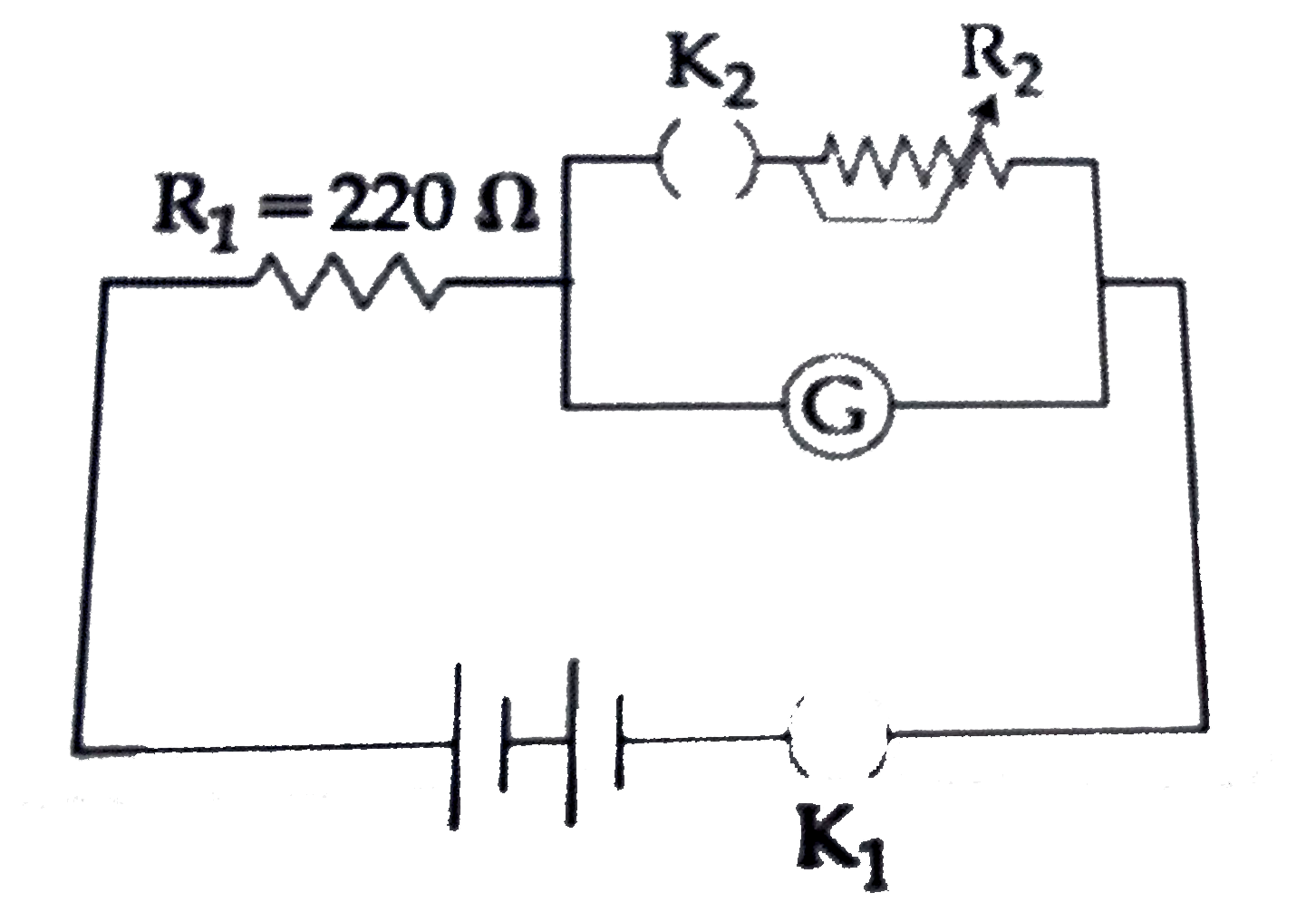
View Solution
Knowledge Check
Assertion To locate null defiection the battery key (K1) is pressed first and then the galvanom eter key (K2)
Reason if first K2 is pressed and then as soon as K1 is pressed current suddenly try to increase so due to self induction a large stopping emf is generated in galvanometer which may damage the glavanometer .Aif both Asseration and Reason are true and the Reason is a correct explation of AsserationBif both Asseration and Reason are true and the Reason is a correct explation of AsserationCif Asseration is ture but Reason is falseDIf both Asseration and Reason are falseIn the following Wheatstone bridge P/Q=R/S. If key K is closed, then the galvanometer will show deflection
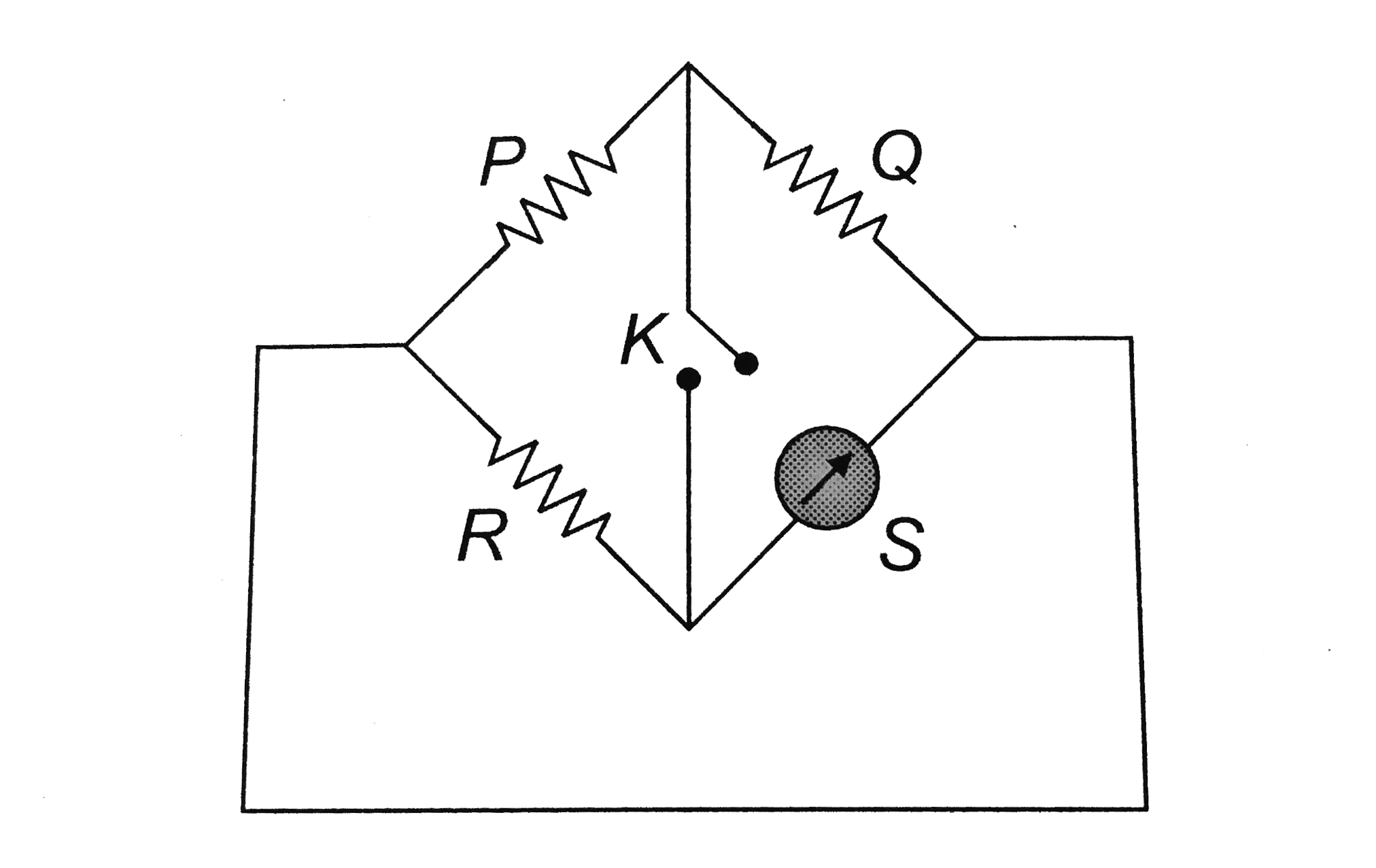 AIn left sideBIn right sideCNo deflectionDIn either side
AIn left sideBIn right sideCNo deflectionDIn either sideThe resistances P,Q,R and S in the bridge shown are adjusted such that the deflection in the galvanometer G is zero when both the keys K1 and K2 are inserted. The galvanometer will show a momentary deflection if
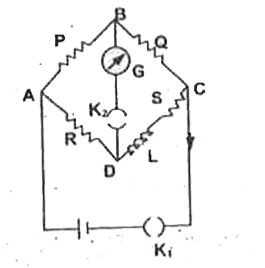 Afirst K2 is inserted and then K1Bfirst K1 is inserted and then K2CK1 and K2 are both inserted but an additional resistance is put in the arm BDDin all the above cases
Afirst K2 is inserted and then K1Bfirst K1 is inserted and then K2CK1 and K2 are both inserted but an additional resistance is put in the arm BDDin all the above cases
The Wheatstone's network is shown in the figure. If the key K is closed, then the galvanometer will
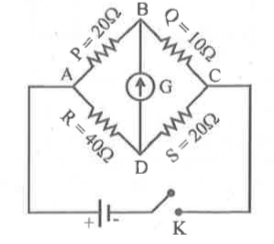
View SolutionIn the given circuit, calculate the ratio of currents through the battery if (1) Key K1 is pressed, K2 open and then (2) Key K2 is pressed, key K1 is opened
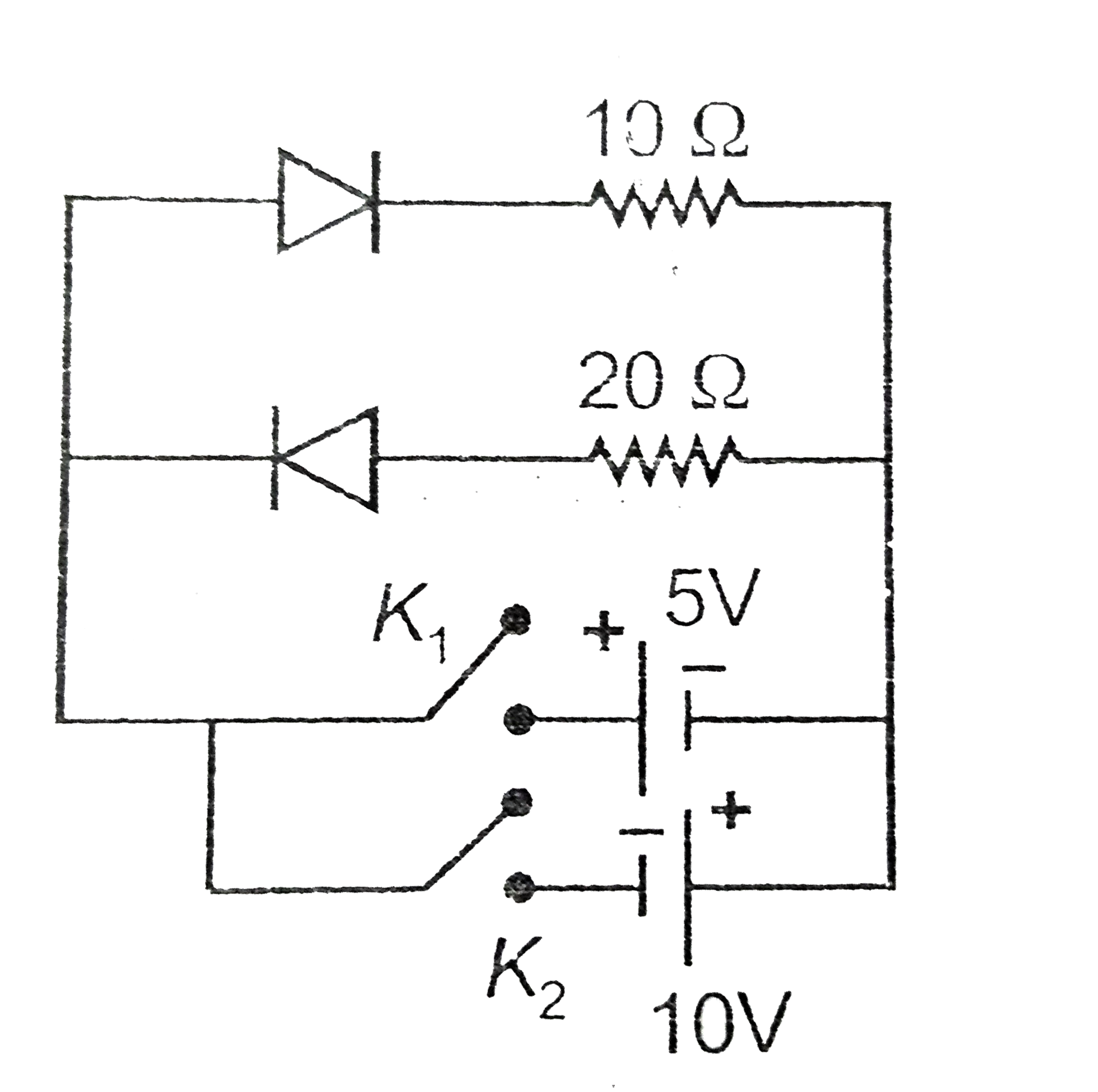
View SolutionIn the given circuit of potentiometer, the potential difference E across AB (10m length) is larger than E1andE2 as well. For keyK1 (closed), the jockey is adjusted to touch the wire at pointJ1 so that there is no deflection in the galvanometer. Now the first battery (E1) is replaced by second battery (E2) for working by making K1 open and K2 closed. The galvanometer gives then null deflection at J2 The value of E1E2 is ab where a=____.
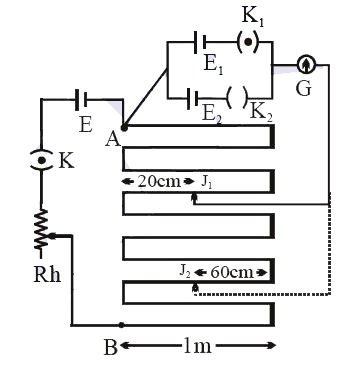
View SolutionIn the arrangement shown in figure when the switch S2 is open, the galvanometer shown no deflection for l=L/2. When the switch S2 is closed, the galvanometer shown no deflection for l=5L/12. The internal resistance (r) of 6V cell, and the emf E of the other battery are respectively
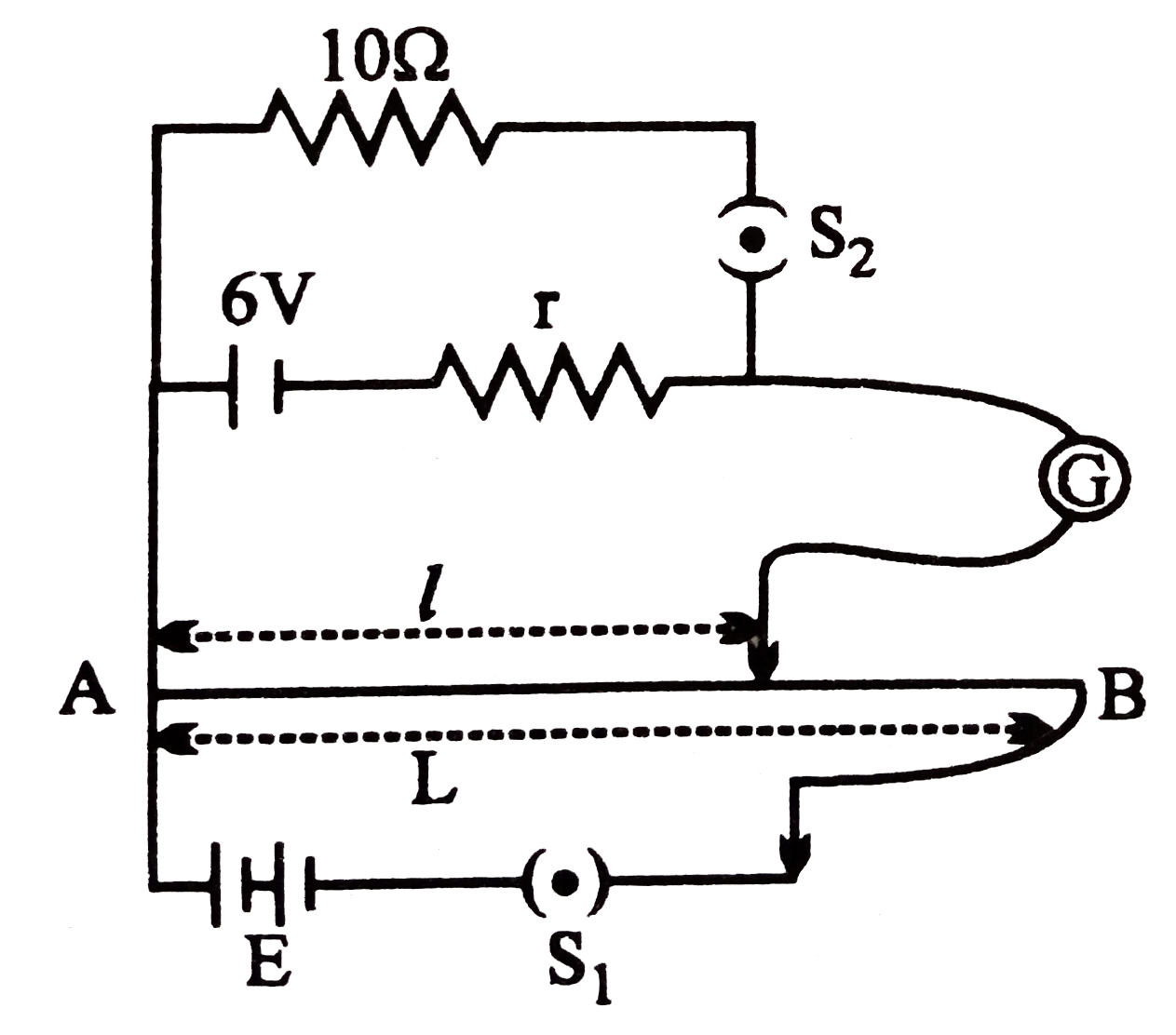
View SolutionA galvanometer of resistance 5Ω is connected in series with a resistance of 0.2Ω to a battery of negligible internal resistance. The deflection is noted. If the 0.2Ω resistance is replaced by 2Ω resistance, the value of shunt resistance to be connected to the galvanometer to maintain the same deflection is
View Solution
